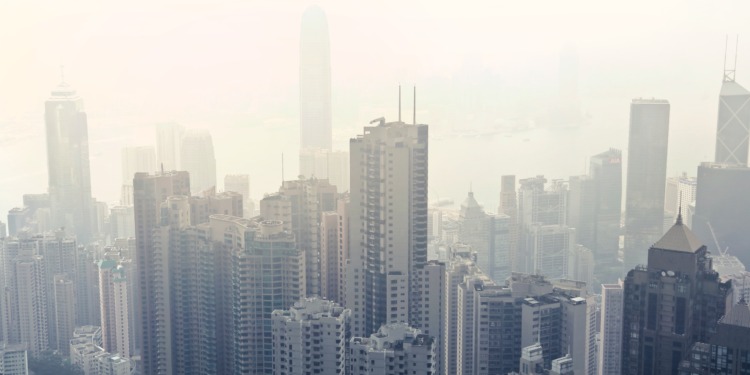Antibiotic resistance stands as a daunting challenge to human health in the 21st century, with some medical experts even deeming it more alarming than the impact of the Covid19 outbreak.
In 2019 alone, nearly five million lives were claimed due to antibiotic resistance.
A recent study has now unveiled an unexpected link between seemingly disparate factors: air pollution and antibiotic resistance.
While the primary culprits behind antibiotic resistance are the overuse and misuse of antibiotics, the study, which was conducted by researchers from Zhejiang University, China and the University of Cambridge, England, revealed a startling correlation – a rise in air pollution aligns with pronounced spikes in antibiotic resistance.
Air pollution already looms as one of the gravest environmental threats to public well-being, and its impact extends to chronic conditions like heart disease, asthma, and a shortened life expectancy.
AMR affects not only humans but also animals and the environment. The One Health approach recognizes the interconnectedness and advocates for a comprehensive strategy to combat AMR. Learn more about this holistic approach: https://t.co/Ek5TbpR31l#AMR pic.twitter.com/9JAsL42icN
— The Foundation to Prevent Antibiotic Resistance (@ResResistance) August 1, 2023
Furthermore, the team of researchers found that the connection between air pollution and antibiotic resistance is not only significant but also growing more robust over time.
The study, which was published in early August in the Lancet Planetary Health journal, looked at over 100 countries’ air pollution and antibiotic resistance rates over the last two decades. In addition, it analysed nine bacterial pathogens and 43 types of antibiotics.
The data was taken from numerous sources, including the World Health Organization, European Environment Agency, and World Bank, covering the years between 2000 and 2018.
Certainly, the implications of the study are profound, extending far beyond the confines of scientific inquiry and delving deep into the realms of policy and environmental deliberations.
As the study’s author commented: “The findings have substantial policy and environmental implications by presenting a new pathway to combat clinical antibiotic resistance by controlling environmental pollution.”
The Link Between Antibiotic Resistance and Air Pollution
While the precise scientific mechanisms binding these two phenomena remain elusive, the study presents compelling evidence that suggests the particulate matter called PM2.5 may harbour antibiotic-resistant bacteria and resistance genes.
Sources of PM2.5, such as road traffic, industry, and domestic burning, expose a staggering 7.3 billion individuals globally to unsafe PM2.5 levels every year.
These microscopic entities, suspended in the air, can find their way into human lungs, potentially exacerbating the surge in antibiotic resistance we currently face, the study suggests.
Related Articles: Antimicrobial Resistance (AMR), Leadership and Humanity | Air Pollution is Leading Environmental Killer, Claiming 7 Million Lives | Tackling Air Pollution — An Interview With Clarity | Survival of the Fittest
Furthermore, the researchers found that the pathways through which antibiotic resistance travels via air pollution are diverse and encompass hospitals, farms, and sewage facilities.
Curbing levels of harmful air pollution could help reduce antibiotic resistance, according to the first in-depth global analysis of possible links between the two, published in @TheLancetPlanet: https://t.co/YSCPXlGFN1 pic.twitter.com/MvENzaoKNH
— The Lancet (@TheLancet) August 7, 2023
Moreover, the study suggests that even a marginal 1% increase in air pollution could be linked to antibiotic resistance spikes ranging between 0.5% and 1.9%, contingent on the specific pathogen involved.
Shockingly, this fusion of air pollution and antibiotic resistance is estimated to have contributed to 480,000 premature deaths in 2018 alone.
Notably, regions like North Africa, the Middle East, and South Asia exhibit especially high concentrations of both PM2.5 and antibiotic resistance.
The study concluded that if air pollution policies don’t change, antibiotic resistance could increase by 17% by 2050.
Hitting Two Birds With One Stone
Certainly, the results of the study support the One Health approach, which highlights the interconnectedness of human, animal, and environmental health.
In the study the researchers stress that by curbing air pollution, we may not only mitigate its immediate health impacts but also fight antibiotic resistance, saving countless lives and reducing associated financial burdens.
“The benefits of controlling air pollution could be twofold,” the lead author of the study, Prof. Hong Chen of the Zhejiang University in China, asserted. “Not only will it reduce the harmful effects of poor air quality, it could also play a major role in combating the rise and spread of antibiotic-resistant bacteria.”
While this revelation carries profound implications, it also invites further exploration.
Dr Albert Rizzo, the chief medical officer for the American Lung Association, advocated for continued research into the interplay between pollution and antibiotic resistance and highlighted the limited research done thus far.
Meanwhile, Dr Rizzo also stressed the undeniable benefits of reducing pollution for overall well-being. “Lowering PM2.5 pollution,” he noted, “will undoubtedly save lives, regardless of the impact on antibiotic resistance.”
Moreover, as we grapple with the complexities of antibiotic resistance and air pollution, this new insight opens a door to potentially transformative strategies for safeguarding human health as well as the climate.
Editor’s Note: The opinions expressed here by the authors are their own, not those of Impakter.com — In the Featured Photo: Smog surrounding Hong Kong’s skyscrapers. Featured Photo Credit: Andrea Piacquadio.








